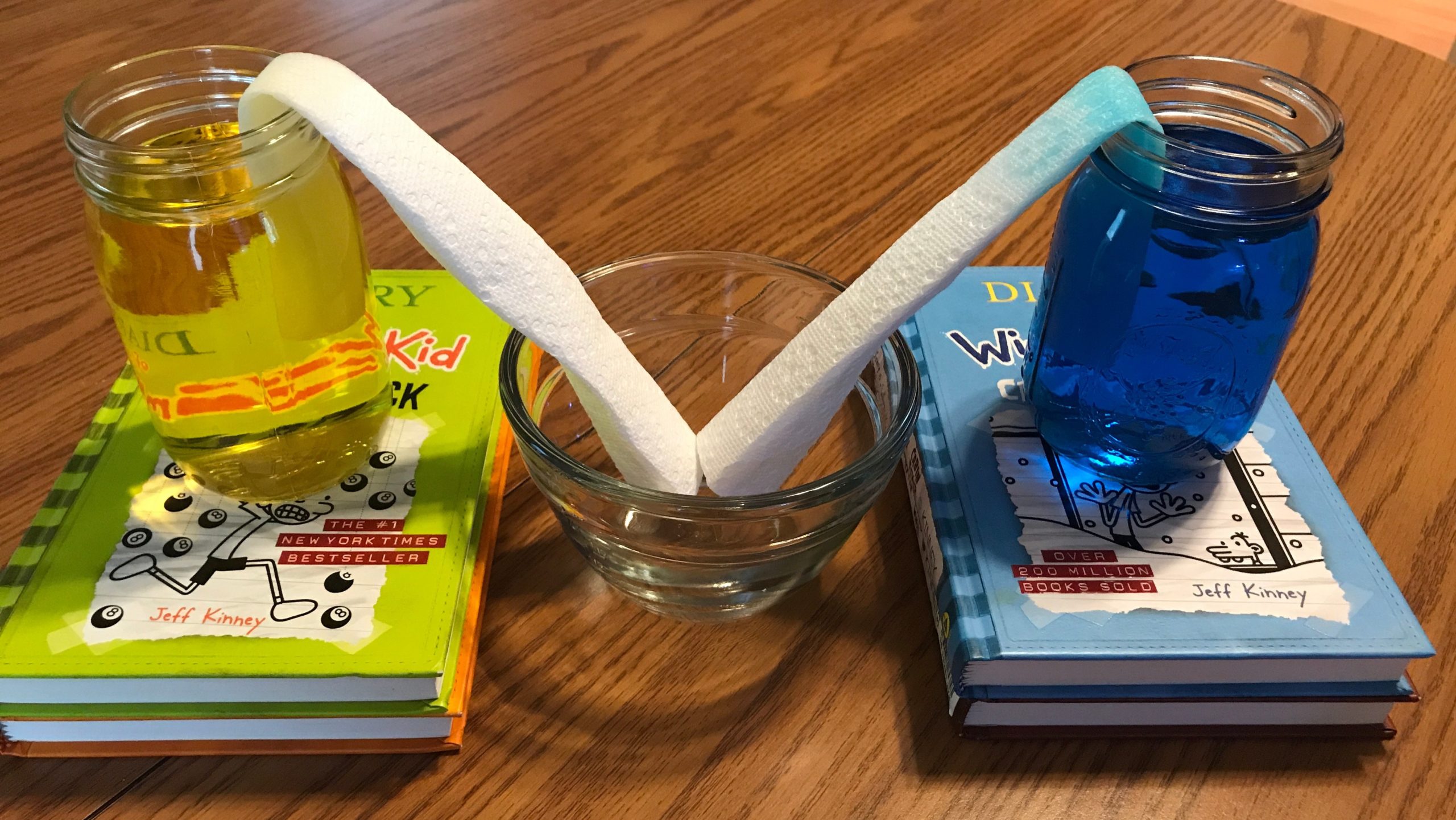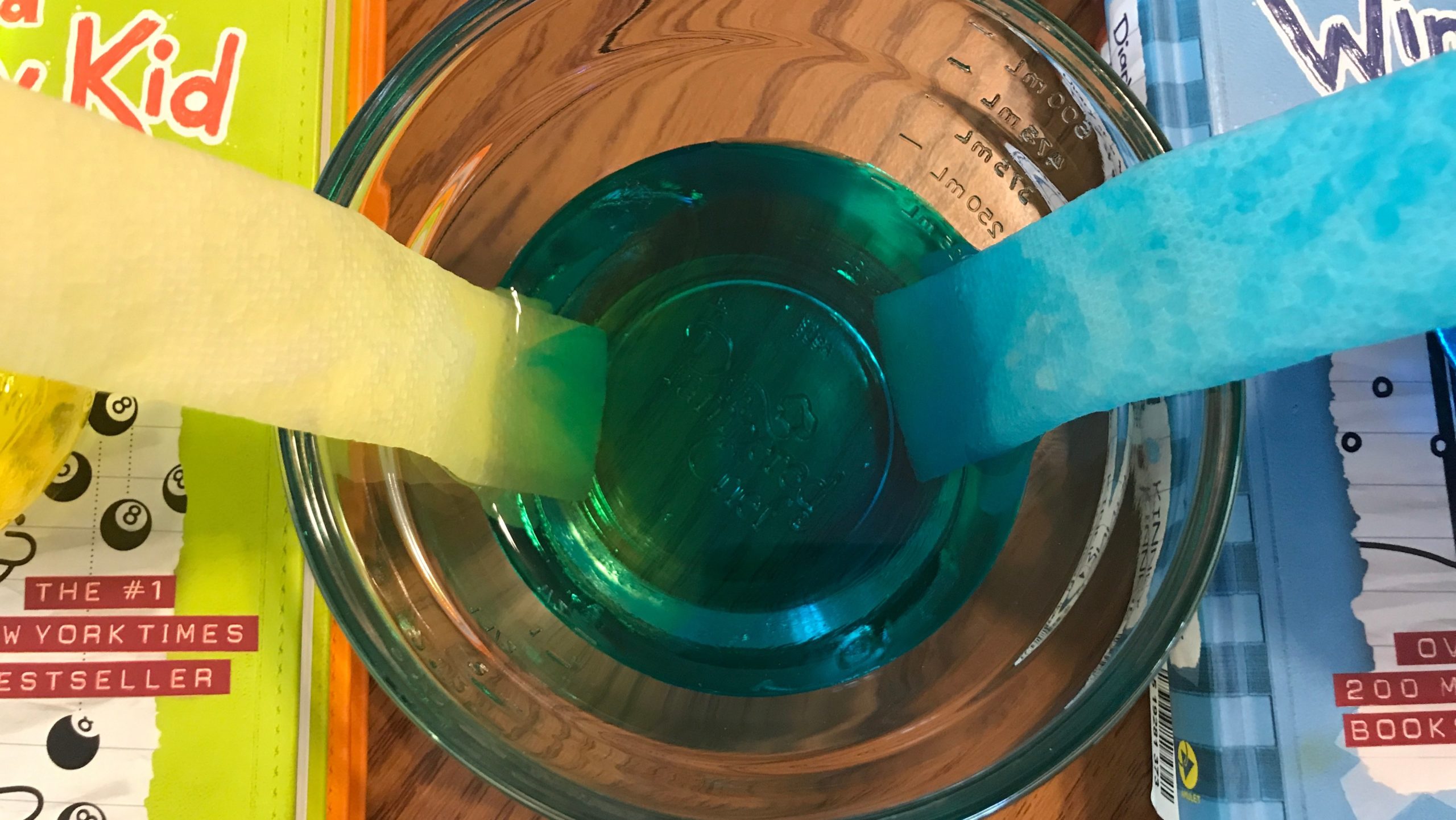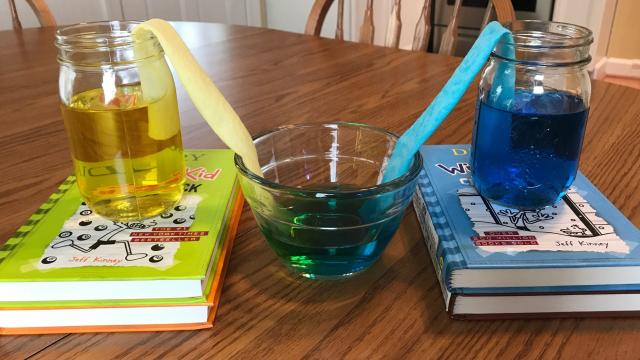Few kids can resist a good science experiment, and I have always found the best ones to be those that are easy to set up, use materials you already have around the home, and are as fun or interesting for you as they are for them. That’s why I couldn’t help but try this “Walking Water” experiment from PBS Kids — and it didn’t disappoint.
To get started, you need the simplest of materials:
- Three clear jars or glasses
- Paper towels
- Water
- Food Colouring
- A couple stacks of books
For the paper towels, the cheaper, less absorbent kind actually work better, because the low absorbency helps the water “walk” faster. After you’ve gathered up your materials, follow these directions from PBS Kids:
1. Have your child fill up two of the jars with water. Add food colouring to the two jars.
2. Place the empty jar in between the two jars that are filled with coloured water. For the best results, put each outside jar on top of a book that is equal in thickness. Ask your child if they know what gravity is. If they gets stuck, explain that gravity is a force that pulls objects toward each other. In this experiment, gravity will help move the water along faster into the empty jar.
3. Help your child fold a paper towel in half multiple times to make a long skinny strip that’s about an inch wide. Do it again with another paper towel.
4. Ask them to dip one end of one paper towel strip into a jar filled with coloured water and lay the other end of the strip into the empty jar. Repeat this with the second paper towel strip. The dry portions of the two paper towels should now meet in the middle jar.
Your set-up will look like this (and if you happen to have a few Diary of a Wimpy Kid books laying around, two on each side worked rather well for us):

It will take several minutes for the water to walk its way into the centre jar; while you wait, make some predictions with your child: Will the water actually walk, and how long will it take? What will happen when the two different colours combine together?
My son and I set ours up right before lunchtime, so we could watch the results unfold as we ate. He chose yellow food colouring for one jar and neon blue for the other. The result was a lovely yellow, green, and blue rainbow effect as the colours slowly mixed together.

Other colour combinations you might consider are yellow and red, or red and blue. And once you’re done, PBS Kids has more experiments, crafts, and activities for families here.

Leave a Reply
You must be logged in to post a comment.